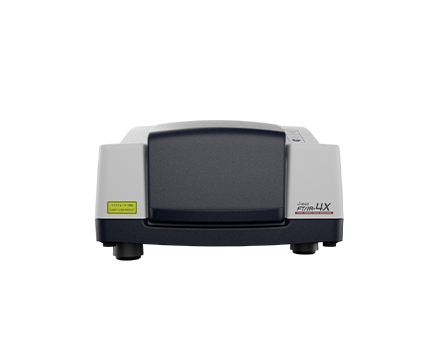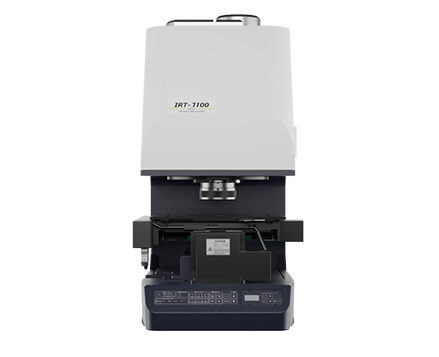Variable-Angle FTIR Transmittance Measurement with Polarization
April 25, 2024
Introduction
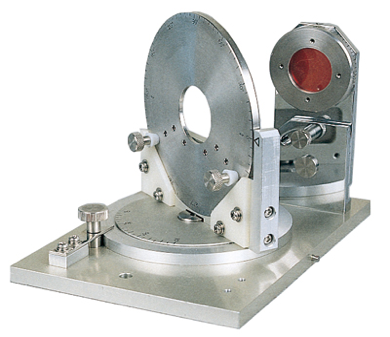
In the semiconductor industry, infrared spectroscopy is widely used for routine analysis such as in the quantitation of impurities like oxygen and carbon, characterization of insulator films and thickness measurement of epitaxial films. There are a number of analytical methods that can be used , with transmission measurement being the most popular. However since silicon wafers have high reflectance, the light used for measurement can be reflected back to interferometer, resulting in noise in the infrared spectrum. The VAT-500i Variable-angle transmittance measurement attachment can be used for challenging samples with strong reflectance. Changes in the incident angle blocks the reflection of the light into the interferometer. Also, the noise due to water vapor can be drastically reduced with small changes in the incident angle from 10 to 20 degrees.
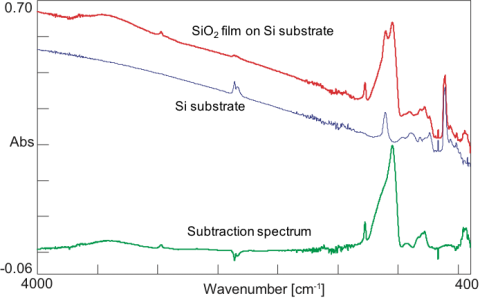
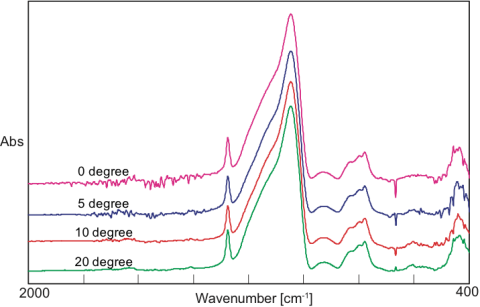
For applications such as analysis of polymers, film coatings, and dichroic measurement of oriented membranes, a polarizer can be mounted in the optical path of the VAT-500i. Fig. 4 shows the dichroic measurement of an oriented polypropylene film. Using the rotatable sample holder, the orientation of a sample with unknown orientation can be confirmed. In this application note measurements with different angles from 0 and 90 degree confirmed that the main axis of this sample was oriented in 0 degree direction. Fig. 4 shows the absorbance spectra at 0 and 90 degree positions, indicating that this polypropylene is isotactic. In addition, the large difference in absorption at 1168cm-1 and 998 cm-1 is due to crystallization and isotactic helical structure, which can be utilized to determine the degree of crystallization.
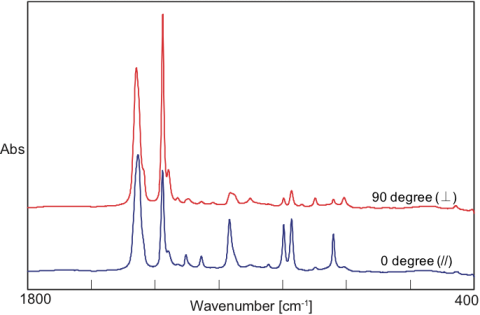
Keywords
260-TR-0153, isotactic material, polypropylene, variable angle transmission IR, FTIR, polarization, epitaxial layer, film coating, dichroic,
Featured Products:

Variable-Angle FTIR Transmittance Measurement with Polarization
Introduction

In the semiconductor industry, infrared spectroscopy is widely used for routine analysis such as in the quantitation of impurities like oxygen and carbon, characterization of insulator films and thickness measurement of epitaxial films. There are a number of analytical methods that can be used , with transmission measurement being the most popular. However since silicon wafers have high reflectance, the light used for measurement can be reflected back to interferometer, resulting in noise in the infrared spectrum. The VAT-500i Variable-angle transmittance measurement attachment can be used for challenging samples with strong reflectance. Changes in the incident angle blocks the reflection of the light into the interferometer. Also, the noise due to water vapor can be drastically reduced with small changes in the incident angle from 10 to 20 degrees.


For applications such as analysis of polymers, film coatings, and dichroic measurement of oriented membranes, a polarizer can be mounted in the optical path of the VAT-500i. Fig. 4 shows the dichroic measurement of an oriented polypropylene film. Using the rotatable sample holder, the orientation of a sample with unknown orientation can be confirmed. In this application note measurements with different angles from 0 and 90 degree confirmed that the main axis of this sample was oriented in 0 degree direction. Fig. 4 shows the absorbance spectra at 0 and 90 degree positions, indicating that this polypropylene is isotactic. In addition, the large difference in absorption at 1168cm-1 and 998 cm-1 is due to crystallization and isotactic helical structure, which can be utilized to determine the degree of crystallization.

Keywords
260-TR-0153, isotactic material, polypropylene, variable angle transmission IR, FTIR, polarization, epitaxial layer, film coating, dichroic,

 Download This Application
Download This Application